Kaval vs Ney Flute: Which Ancient Wind Breathes Your Song?
The big question of kaval vs ney flute often starts because they look alike. Both are simple tubes blown from the end. But for anyone wanting to play Balkan or Middle Eastern music, learning how they differ is key.
These are not just flutes. They carry old traditions, and each has its own voice and spirit. One flute sings about mountains and happy town dances. The other sounds like a sad poem from a wise mystic.
This guide will clear up the mystery of these two famous instruments. We will look past their shape to see what makes each one special.
You will learn how they are made, how to play them, and the culture behind their music. When you finish, you will know more than just the difference in the kaval vs ney flute debate. You will feel which one’s song speaks more to you.
A Closer Look at the Kaval vs Ney Flute Design
If you see them from far away, you might get them mixed up. Both are long flutes you play by blowing across the top edge. But up close, you can see big differences in how they are made. These details change everything about how they sound and how you play them.

Kaval Flute
The kaval is a true shepherd’s flute. Its simple build shows its rustic history. It is usually made from one piece of strong wood, like apricot, plum, or cherry. This makes it feel solid in your hands.
The most important part is the top edge where you blow. It’s shaped into a thin, almost sharp rim. There is no mouthpiece. Your lips must form the right shape right on this edge.
A kaval has eight finger holes on top and one thumb hole on the bottom. Many kavals from the Balkan region also have four extra holes near the end. People call these “devil’s holes.” You don’t cover these holes. They help give the kaval its special airy and breathy sound.
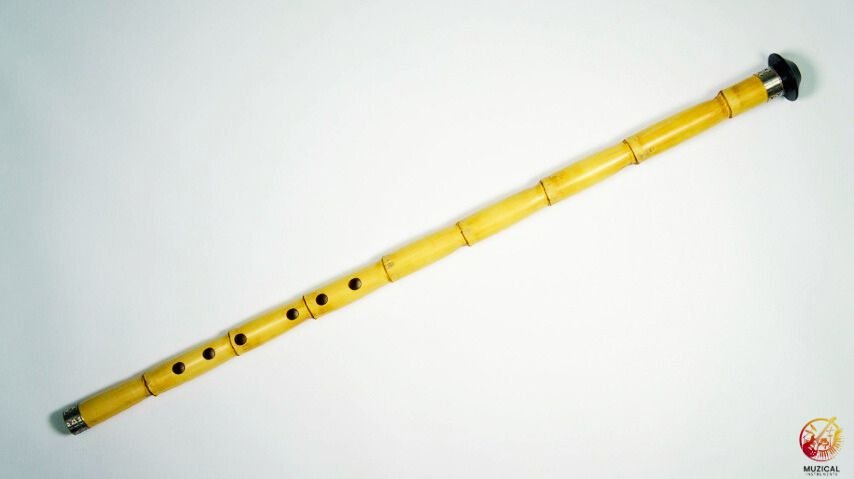
Ney Flute
The ney comes from a different place: the riverbank. The classic ney flute is made from a special kind of reed called Arundo donax. In fact, “ney” is the Persian word for reed. The biggest difference between them is that the ney has a mouthpiece, called a başpare. This piece is often made from buffalo horn, wood, or plastic. The başpare is a wide, comfy platform that you press against your lips. It helps guide the air into the flute. This one part completely changes how you play. It makes it easier to aim your breath, which helps create the ney’s warm and reedy sound.
| Feature | Kaval | Ney |
|---|---|---|
| Main Material | Strong wood (apricot, plum) | Reed (Arundo donax) |
| Mouthpiece | None; built-in sharp rim | Separate Başpare (horn, wood, plastic) |
| Build | Usually one solid piece of wood | One piece of reed with natural joints |
| Finger Holes | 8 on top, 1 on bottom | 6 on top, 1 on bottom |
| Special Part | “Devil’s holes” on some models | The başpare mouthpiece |
| How it Feels | Solid, woody, simple | Light, natural, fragile |
So, the main physical difference in the kaval vs ney flute comparison is simple. With a kaval, you blow on a sharp wood rim. With a ney, you use the başpare mouthpiece.
What Makes the Sound of Each Flute Unique?
The way these flutes are built leads to two very different sounds. The sound of an instrument is its voice. It’s the color and feeling it creates. In this area, the kaval and ney are worlds apart.
Kaval Flute
The sound of the kaval is often called airy, soft, and breathy. It sounds like the wind itself, turned into a melody. When you blow across the sharp edge, some air escapes around the note. This makes a soft “hiss” that is part of the flute’s special voice. A good player learns to use this breathy sound to show emotion.
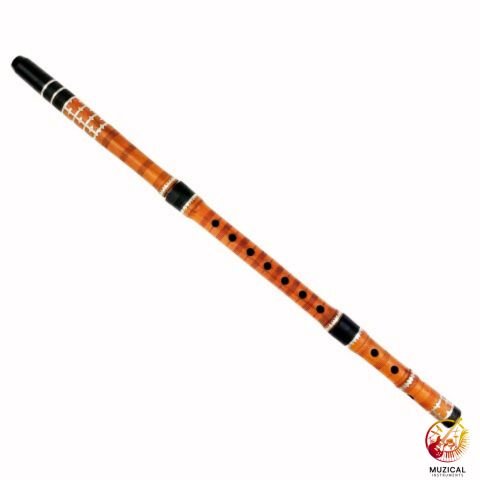
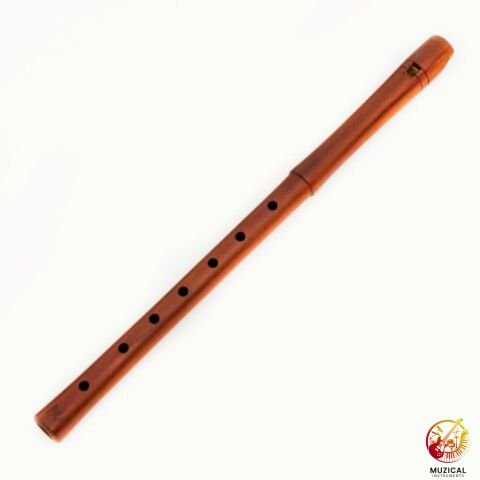
The kaval’s real magic, though, is in its overtones. These are higher, whistle like notes that hide inside the main note. By changing your lips and breath, you can make the flute jump between low and high sounds easily. This gives it a wild and open feel, perfect for the music of the Balkan mountains.
Ney Flute
The ney, on the other hand, has a sound that is warmer, deeper, and more like a human voice. The başpare mouthpiece focuses your breath, so there is less of that airy sound. This creates a clear, reedy tone. Its sound is often sad and full of feeling.
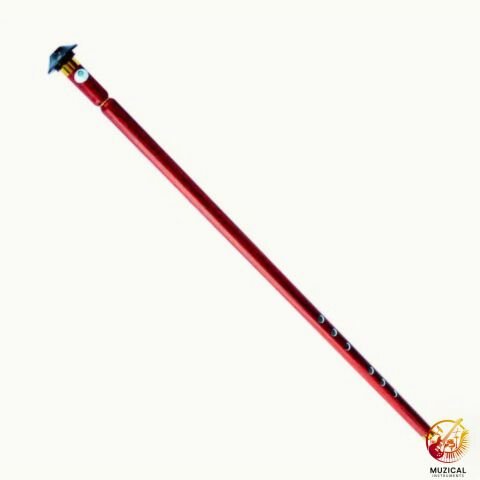
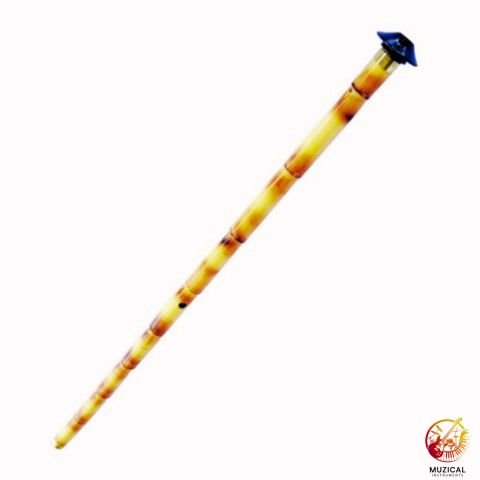
In the Sufi faith, the sound of the ney is like the reed crying because it was cut from its home. This is a symbol for the human soul wanting to connect with God. Good ney players can make the flute sound like a person singing or praying. Their deep connection makes the sound of the kaval vs ney flute very distinct from one another.
Think of it like this. The kaval is like a wide photo of a mountain, full of open space. The ney is like a close-up picture of a face, showing every small feeling.
The Kaval vs Ney Flute: Which is Harder to Learn?
This is a question every beginner has. The simple answer is that both are very hard to learn, but for different reasons. Neither one is an easy choice. They are harder than a standard school flute because you have to make the sound just with your lips and breath. For both the kaval and ney, it can take weeks of practice just to make your first clear note.
Kaval Flute
The kaval is hard because of its sharp, raw edge. You have to find the perfect angle and lip pressure to make a sound. It’s a tricky balance. If you don’t blow hard enough, you only get air. If you blow too hard, the sound stops. The angle of your breath must be just right, and it changes for high and low notes. Playing in tune is also a big challenge, as the pitch can change with every tiny shift in your breath. It takes a lot of patience.
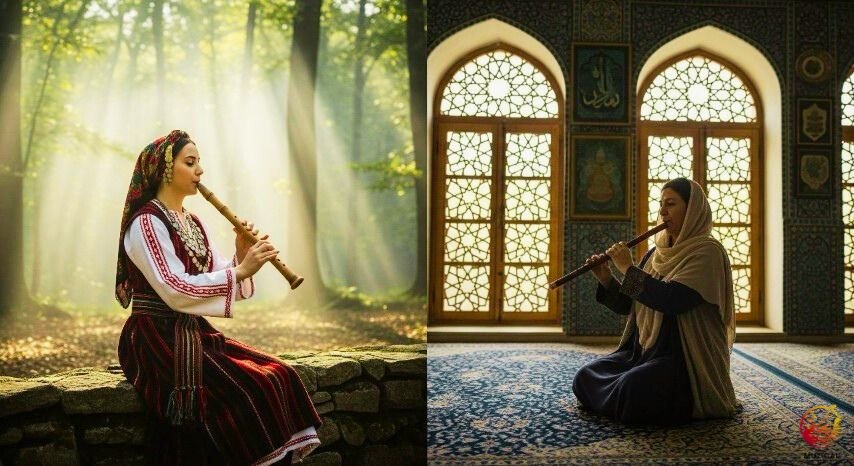
Ney Flute
The ney is hard because of its unique mouthpiece, the başpare. You don’t just blow into it. A common way to play is to hold the flute at an angle and rest the başpare on your front teeth. Then you curl your lips around it to make a tiny opening for your breath. Finding this sweet spot takes a long time. Many new players struggle to get a steady sound. The ney is also used for music with notes that are not on a piano. These “microtones” are very important in Turkish and Persian music and take great skill to play correctly.
Expert Insight: Be Patient With Yourself
Don’t get sad if you can’t make a sound right away. Almost every master player started out the same way. The key is not talent, but just sticking with it. I tell my students to practice for 10 minutes every day. Just try to hold one long, steady note. This helps your lip muscles remember what to do. The sound will come, but you have to be patient enough to wait for it.
So, when we look at the kaval vs ney flute, one is not “harder.” The question is what kind of challenge you want to take on.
What Kind of Music Does Each Instrument Play?
An instrument is more than just wood or reed. It is a key to a whole new world of music and culture. The choice between a kaval vs ney flute is also a choice between two different kinds of music. Playing a kaval connects you to a history of shepherds and village parties. Playing the ney takes you into a world of prayer and classic art music.
Kaval Flute
The kaval is a true folk instrument from the Balkans and Turkey. In countries like Bulgaria, it is a national symbol. It’s used to play fast, fun music for dances at weddings and festivals. Its strong, earthy voice can be heard clearly over drums and bagpipes.
In Turkish folk music, it’s used for slow, sad songs that sound like they come from the soul of a shepherd. The kaval’s music is for communities, for dancing, and for feeling connected to the land.
Ney Flute
The ney is used for more spiritual and classical music. It is the main wind instrument in Turkish, Persian, and Arabic classical music. It is used to play melodies in complex systems called makam or dastgah. This music is very fancy, with strict rules for how to play. The ney is most famous for its use in the Sufi faith. The poet Rumi, who started the group known as the “WhirlingDervishes,” said the ney’s sound was like the human soul calling out to God. In their ceremonies, the ney is the lead voice. Playing the ney in this way is a form of prayer.
| Aspect | Kaval | Ney |
|---|---|---|
| Main Music Style | Folk Music | Classical & Spiritual Music |
| Main Regions | The Balkans, Turkey | Turkey, Iran, Arab countries |
| Where You Hear It | Village dances, weddings, fields | Sufi ceremonies, concerts |
| Ideas Behind It | Shepherd’s song, dance, nature | Sufi faith, prayer, classic art |
| Role in a Band | Leads the folk melody | Leads the melody; used for prayer |
Choosing one also means choosing which of these amazing histories you want to be a part of.
How Do I Choose Between a Kaval and a Ney?
Now you know the deep differences in how they are made, how they sound, and the culture they belong to. So, how do you pick one? The choice should come from what sound you love, what music you want to play, and what feels right for you. The final decision in the kaval vs ney flute matchup is a personal one.
First, you must listen. Your ears are your best guide. Spend time online listening to masters of both instruments. For the kaval, look for players like Theodosii Spassov. For the ney, listen to someone like Kudsi Erguner or Niyazi Sayın. See which sound gives you chills. Which voice sounds like it’s speaking to you? This feeling is the most important thing.
Next, think about what kind of music you want to make.
- You might like a kaval if: You love raw, earthy, and powerful sounds. You feel the energy of Balkan folk dance music. You think overtones are cool and want a flute that feels a bit wild.
- A ney might be for you if: You love soulful, quiet, and spiritual sounds. You want to learn the deep rules of Middle Eastern classical music. The connection to poetry and prayer feels important to you.
Last, be practical. Finding a good teacher can be more important than which flute you pick. See if there are teachers in your area or online. A great teacher can make the hard parts much easier to learn. The learning tools available to you should help you decide which path to take.
Pro Tip: Buying Your First Flute
Don’t buy a cheap flute from a souvenir shop. They usually don’t play well at all. For your first kaval or ney, find a maker who is known for good quality. A good student instrument will save you from a lot of frustration and make learning the kaval vs ney flute much more enjoyable.
Final Thoughts
When you look closely at the kaval vs ney flute, you see they are very different instruments. The kaval, made of wood, sings the breathy songs of the mountains. It is a rustic and strong folk voice. The ney, made of reed, sings the soulful and focused song of the mystic. It is a refined and spiritual voice.
Choosing between them is not about which one is better. It is about finding the voice that matches your own.
Listen to as much music as you can. Let the sound of the masters help you decide. Which ancient wind will you bring to life, and what songs will you sing with it?
Before comparing, it helps to clearly understand what a kaval flute is and where it comes from.
FAQ: Kaval vs Ney Flute
1. What is the single biggest difference between a kaval and a ney?
The biggest difference is the mouthpiece and the material. The kaval is a wooden flute with a simple, sharp rim you blow across. The ney is a reed flute that uses a separate, comfortable mouthpiece called a başpare. This leads to their different sounds: the kaval is airy and rustic, while the ney is warm and soulful.
2. Can I teach myself to play the kaval or ney using online videos?
While it’s possible, it is very difficult. Getting the correct embouchure (lip shape) and posture is hard without direct feedback. A teacher, even one online, can correct small mistakes before they become bad habits. Finding a good teacher is one of the best things you can do to learn either instrument.
3. What key of kaval or ney should I buy first?
For a Balkan-style kaval, a D kaval is the standard and a great choice for beginners. For the Turkish ney, most teachers recommend starting with a “Kız Ney,” which plays in the key of B. It’s always a good idea to check with a teacher before buying your first instrument.
4. Do I have to learn complicated music theory to play the ney?
To play traditional Turkish or Persian music on the ney, you will eventually learn about the musical system called makam. This is similar to learning scales and chords in Western music. However, when you first start, your main focus will simply be on producing a good, steady tone. You can learn the theory as you grow as a player.
5. What is the most important thing to consider in the kaval vs ney flute choice?
The most important factor is sound. Before you decide, listen to as much music as you can from master players of both flutes. The instrument whose voice connects with you on an emotional level is the right one for you to begin your journey with.
